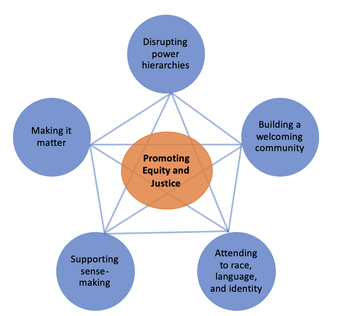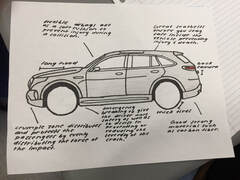FIVE DESIGN PRINCIPLES FOR CREATING EQUITABLE LEARNING EXPERIENCES

The five design principles, emerging from
research on when and under which conditions
students from non-dominant communities
engage in science meaningfully, guide our design
and enactment of curricula. They are: (a) making
it matter, (b) supporting sense-making,
(c) attending to race, language, and identities,
(d) building a welcoming community, and
(e) disrupting power hierarchies (see the details in
Kang & Nation, under review).
research on when and under which conditions
students from non-dominant communities
engage in science meaningfully, guide our design
and enactment of curricula. They are: (a) making
it matter, (b) supporting sense-making,
(c) attending to race, language, and identities,
(d) building a welcoming community, and
(e) disrupting power hierarchies (see the details in
Kang & Nation, under review).
How are modern cars designed to keep you and your family safe in a collision?
momentum Unit

Unit: Momentum
Grade Level(s): 10-12
Duration: 5 Weeks
In this unit, the students design a car considering safety features for a loved one. Throughout this unit, the students focus on four main questions related to the guiding question:
(1) How can we predict the outcome of a collision?
(2) Why do some collisions cause more damage than others?
(3) How does the material influence the damage in a collision?
(4) How do safety features reduce injury during a collision?
